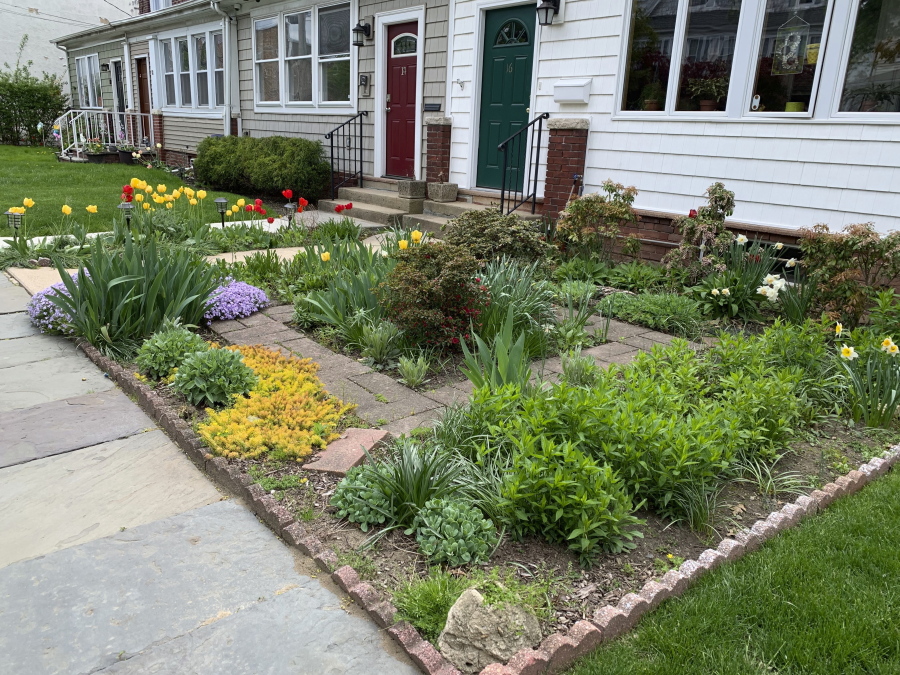WHITE PLAINS, N.Y. — LeighAnn Ferrara is transforming her small suburban yard from grass bordered by a few shrubs into an anti-lawn — a patchwork of flower beds, vegetables and fruit trees.
It didn’t happen all at once, says the mother of two young kids. “We started smothering small sections of the lawn each year with cardboard and mulch and planting them, and by now the front yard is probably three-quarters planting beds,” she says. “Every year we do more.”
Her perennials and native plants require less upkeep and water than turf grass does. And she doesn’t need herbicides or pesticides — she’s not aiming for emerald perfection.
For generations, the lawn — that neat, green, weed-less carpet of grass — has dominated American yards. It still does. But a surge of gardeners, landscapers and homeowners worried about the environment now see it as an anachronism, even a threat.
Like Ferrara, they’re chipping away at it.
“America is unique in its fixation on the monoculture lawn,” says Dennis Liu, vice president of education at the E.O. Wilson Biodiversity Foundation in Durham, N.C. “Our English inheritance is our own little tidy green space.”
Now, drought, crashing insect populations and other environmental problems are highlighting – in different ways, in different places – the need for more kinds of plants.
Some people are experimenting with more “eco-friendly” lawns, seed mixes you can buy with native grasses that aren’t as thirsty or finicky. Others are mowing less and tolerating old foes like dandelions and clover. Still others are replacing lawns, entirely or bit by bit, with garden beds including pollinator-friendly and edible plants.
It all leads to a more relaxed, wilder-looking yard.
“The more you can make your little piece that you’re a steward of go with nature’s flow, the better off everyone is,” says Liu.
In states with water shortages, many homeowners long ago swapped out turf grass for less-thirsty options, including succulents and gravel.
Elsewhere, the pandemic has speeded the trend away from lawns. Gardening exploded as a hobby, and many nongardeners spent more time at home, paying more attention to the natural world around them.
Municipalities across the country are handing out lawn signs with “healthy yard” bragging rights to homeowners who forgo lawn chemicals or mow less often. Many towns are slapping regulations on common tools like gas-powered leaf blowers and mowers, mostly because of noise.
“For people interested in gardening, a lot have come to the realization it can’t just be ornamental anymore. It has to serve some other purpose, whether food, habitat … pack in as many uses as you can,” says Alicia Holloway, a University of Georgia Extension agent in Barrow County. “It’s a shift in thought, in aesthetics.”
Monrovia, a major grower of plants for nurseries and other outlets, has seen lots of interest in a “Garden of Abundance” trend – a more “alive-looking” yard with a variety of plants, says company trend watcher Katie Tamony.



